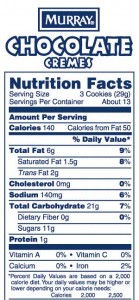Nutrition For Your Health
When we talk to clients about nutrition, there always seems to be some misinformation or misconceptions floating around. We try to make things easier to understand. There is no need to make nutrition more complex than it already is! What I have tried to do today is break it down into easy to remember guidelines. To get the most out of Nutrition For Your Health, remember the 5 Fs & 1 V:
F #1: FATS~ Use your food label to monitor the type and amount of fats in your food. The two main fats to be concerned about are Saturated & Trans Fats. These fats have been shown to be the most damaging fats to the body. They are responsible for raising cholesterol levels and increasing your risk for heart disease. Daily intake levels vary but a general guideline would be for women to keep Saturated & Trans fats, combined, to no more than 12-14 grams a day. Men should keep their intake to no more than 15-17 grams a day. Remember, these numbers will vary according to your individual needs. Foods high in Saturated fats include: Beef, Pork, dark meat of chicken & turkey, cheese, 2% or Whole Milk, butter,ice cream, chocolate bars, fried foods & many fast food choices. High Trans Fats Foods include many commercially baked goods such as cookies, cakes, pies, & donuts, many fast food choices. (Since food companies were required to list trans fats on the food label in 2006, it is interesting to note the number of foods that are now “Trans Fat free”!!)
F#2: FISH~We have already discussed the fact that beef & pork are high in saturated fats. Fish is extremely low. Even the leanest cuts of beef & pork are still high in saturated fats. The benefits of fish go beyond just the fat content. In fact, fatty fish such as Salmon & mackerel are recommended for their unsaturated fat content. It has been stated that eating ~6 oz of Salmon a week will provide you with a therapeutic range of Omega 3 fatty acids. That can help you control cholesterol levels and protect your heart. Eating more fish does not mean that you stop at your local fish fast food place or grab the fish stix out of the freezer section in the grocery store. Those choices tend to be high in saturated/trans fats and lower in the beneficial fats your body needs. They are also much higher in sodium! You can find affordable salmon choices in your local grocers freezer section. You can also use canned varieties as well. Remember, you want to bake, grill, steam or boil your seafood. Breading & frying tends to take us back to the high fat foods we’re trying to reduce. Check out some recipes here!
F#3 + a V: FRUITS & VEGETABLES~ These two food groups continue to be the most overlooked foods on our list. We know they are low in fat & calories but we continue to under eat them. These foods provide our bodies with numerous vitamins & minerals. They are referred to as “Natures Perfect Supplement”. Increasing your intake of these foods can not only help you control weight, blood sugars and cholesterol levels, they can also help you lower blood pressure. When patients are told by their doctors that they have high blood pressure, they are usually prescribed medications and told to avoid salt or sodium. If you simply increase your intake of fruits and vegetables you can significantly lower your blood pressure….regardless of whether or not you lower your sodium intake. If you do lower your sodium intake along with increasing fruits & vegetables, blood pressure levels drop even further. The other benefit of increasing Fruits & Vegetables, it helps to increase your FIBER intake.
F#4: FIBER~We are all aware that increasing fiber can help with regulating bowel movements. But did you know that increases in Fiber can also help to lower cholesterol level? Fiber will bind with cholesterol in the gut and help to remove it. By eating more fruits & vegetables, whole grain breads and cereals, and adding dried beans & lentils to your daily intake you can easily reach the goal of 25-35 grams of fiber a day. Read your food labels to determine the exact amount of fiber in your favorite foods.
F#5: FUN!~Remember, you have to enjoy life. Sharing a meal with others is about more than just eating the food. We also benefit from the personal interactions. Don’t focus on what you “can’t have” but rather on the good things you can have. Find new ways to add more fun to your life. It has often been said that, “Laughter is the best medicine!” Focus on the positive choices you’ve made and keep moving forward!
So there you have it the 5F‘s and a V for better health:
1. Know your FATS
2. Eat more FISH
3. Increase your FRUITS & VEGETABLES
4. Check your FIBER
5. Have FUN!
It’s Your Health. It’s Your Life. Make That Change!
~Johnikoni






